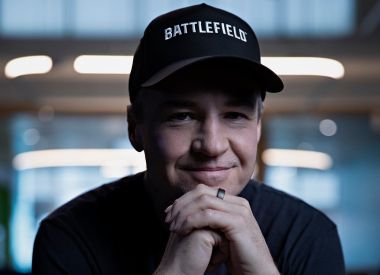Dying Light is an admirable attempt at bringing the zombie-survival genre into the current generation of gaming. In general, it far surpassed the limited expectations of myself and the rest of the International Digital Times staff members who’d been keeping an eye on Dying Light pre-launch.
But it’s probably not going to change your mind about the sub-genre, and anyone looking for rich story-telling or deep first-person combat may want to steer clear of Dying Light for its first few weeks on the market. A handful of mission offer the sort of rich story-telling I was hoping to find throughout the Dying Light experience but this is zombie-filled sandbox before anything else.
Dying Light continues to raise the bar for current-gen graphics, a fact that's particularly noteworthy in the wake of high-profile, end-of-year releases like Call of Duty: Advanced Warfare or Far Cry 4. The city of Harran looks good both up-close and when viewed from a distance and former vacation destinations (with oppressive governments) prove that they're still the best possible setting for tales from the zompocalypse.
Unfortunately, it doesn't take long to realize that most of the content in Dying Light still lacks any real depth and that Techland's latest open-world adventure joins a long list of projects that probably could've been great with a bit more time in the oven.
Dying Light is hardly a disappointment, especially for those who enjoy games like Dead Island or State of Decay, but I can't be the only who realizes that the game could have been so much more.
In Dying Light, players assume the role of Kyle Crane; a GRE operative dropped into the fictional city of Harran just two months after the city was overrun by a virus that brings the dead back to life. In response to the virus, the rest of the world has effectively turned its back on Harran, quarantining the city and reducing outside support to the handful of food and medicine drops that take place each day.
As Crane, it's your job to track down a former political figure from Harran; one that has apparently fashioned himself into something of a warlord in the weeks after the city fell. Along the way, Dying Light drags players into a heated conflict between rival groups of survivors and watches as Crane attempts to help the various people around him while also seeing his mission through to its conclusion.
And I've barely even mentioned the zombies yet.
The undead prove to be quite deadly in Dying Light, especially if/when you find yourself trapped in enclosed spaces. The various special zombies roaming Harran are deadly enough to make your heart race whenever they manage to get the jump on you. Headshots are still the rule of the day, even though repeated attacks to other body parts will certainly drop many foes, and the Dying Light dev team does an amazing job of building/maintaining tension in a sprawling urban environment.
Dying Light's protagonist is quite the fan of parkour and our hero's free-running abilities ensure that travel is far from the boring experience found in many open-world games. With just a couple of button presses, it's easy to send Crane scurrying up/down the side of a building, over/under obstacles in his path and/or into any number of nooks and crannies spread throughout Harran. Getting the hang of free-running isn't easy, though.
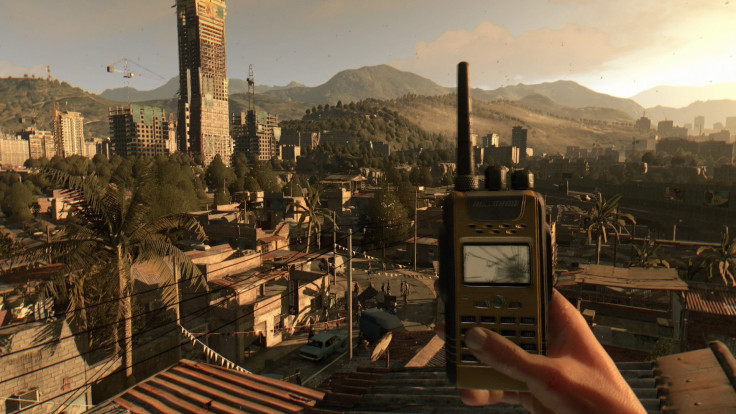
Early on, Dying Light’s free-running mechanics can be incredibly frustrating. As you’d expect, it takes time to master Techland’s take on parkour; in part because such movements rarely form the backbone of a video game. It also doesn’t help that, like so many other video game heroes/heroines, Dying Light’s protagonist needs a bunch of experience points before his lungs are actually functioning at full capacity.
That said, when you get into the zone, crossing the city of Harran at the runners’ breakneck pacing can easily become one of the most exhilarating means of travel to be featured in an open-world video game.
In many ways, learning the fastest ways to traverse each environment feels similar to the process of learning each new city in the Assassin’s Creed franchise. Early on, it can take some time to travel one from end of the city to the other and climbing various structures can be both time-consuming and a bit of a headache. However, it isn’t long before you learn to look at the world like a “runner” and recognize the subtle pathways that reveal themselves as you move around Dying Light’s fictitious setting.
At its best, Dying Light had me day-dreaming about a future where those of us who aren’t built for activities like parkour are able to experience a close approximation with the help of third-party devices like the Oculus Rift and KOR-FX Gaming Vest. Even the grappling hook, a tool that doesn't come into play until halfway through Dying Light's campaign, made me excited for the prospects of a Spider-Man game developed specifically for current-gen platforms.
Movement (in every form) really is a treat in Dying Light. It's just too bad that the rest of the Dying Light experience doesn't appear to have the same level of polish as the various parkour-inspired maneuvers you'll be relying on throughout the game.
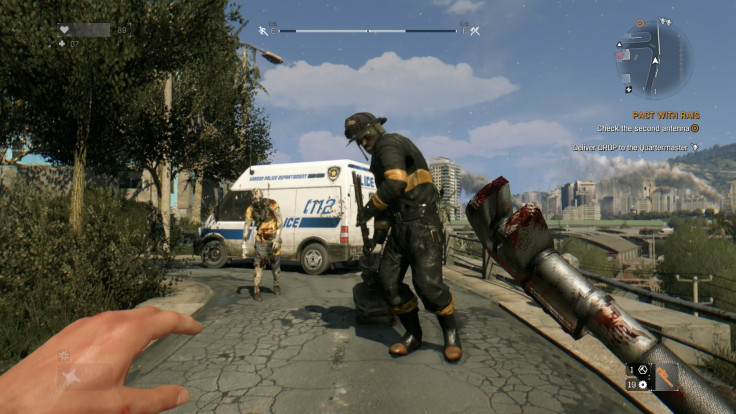
For all the fun there is to be had with Dying Light’s free-running mechanics, I suppose it shouldn’t come as a shock that combat tends to leave something to be desired. It’s far from bad, and I don’t recall ever getting frustrated enough with any one encounter to make me storm away from Dying Light in anger.
But, even after completing the Dying Light campaign, I can’t honestly say that I feel like I’ve got the hang of the game’s melee combat. And these sorts of games are kind of my thing, these days.
Techland certainly packed a diverse armory into Dying Light, letting players take down Harran’s undead with everything from throwing axes to military-grade firearms. But the stamina requirements for Crane’s blunt/blade weapons don’t vary enough for my tastes, grappling is laughably useless and Dying Light’s damage systems don’t ever seem to account for the significant variations of each weapon.
Like so many other aspects of the Dying Light experience, the sort of differences I'm looking for exist on a very basic level. Knives and other bladed-weapons are the only ones that will decapitate your enemies but it takes as long to provide zombie-killing cranial trauma with your average nail-pulling hammer as it does with a spiked baseball bat. While we're on the subject, living enemies can eat a few too many bullets for my taste, too. But more on that later.
While the overpowered weaponry made available to players late in the campaign certainly offset some of my complaints, impatient players will likely sell their copies of the game instead of wading through the early stages of the Dying Light campaign. You'll need to complete a fair amount of the game's single-player campaign, and/or a significant amount of side content, before Crane can regularly take on more than a couple of zombies.
It also would've been nice to see the dev team give players a better means of choreographing melee attacks; particular during the early goings, when Dying Light players only have enough stamina for a handful of attacks before retreating for a breather. And don't get me started on the repair system, which limits the number of times you can repair an time; a design flaw that all but ensures Dying Light players never feel comfortable attaching top-tier add-ons to their weapons.
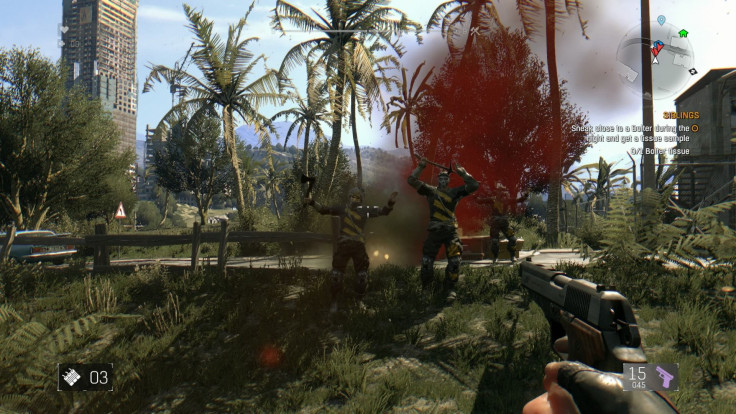
Much like the game’s melee combat, gunplay is something of a mixed-bag in Dying Light, thanks to an attention to detail rarely seen in other post-apocalyptic shooters that can’t quite offset the fact that firearms feel a bit under-powered when Crane finds himself facing down other survivors.
To the Dying Light dev team’s credit, I was overcome with the joy the first time I stumbled upon a half-looted air drop with both a loaded nine millimeter pistol and a police-issue rifle taking up space in my inventory.
Unlike so many post-apocalyptic games, where non-player characters seemingly forget that bullets are more-effective than blunt objects, living enemies in Dying Light recognize when they are outgunned and throw their arms up in surrender.
Unfortunately, there’s still doesn’t seem to be any way for Dying Light players to avoid combat in these scenarios – in the interest of ammo/medkit preservation -- and Crane will generally be forced to kill the majority of Rais’ thugs to claim the contents of each air drop. Occasionally, one or two will retreat when it becomes clear they cannot win, but it seems the only peaceful way to reclaim air-dropped supplies is to reach them first.
And, while many players will likely relish the few moments when their foes are frozen by fear, it would have been nice to see Techland give each encounter the same depth that made combat so tense in I Am Alive. Specifically, it’d be nice to see human opponents try and work together to distract the player.
It’s great to see living enemies show respect for the fact that a single bullet could mean the end but, if a peaceful resolution isn’t on the table, why don’t they immediately try to use their superior number to regain control of the situation? Better yet, why doesn't me blowing some guy's head off scare at least one or two of his friends into making a hasty retreat?
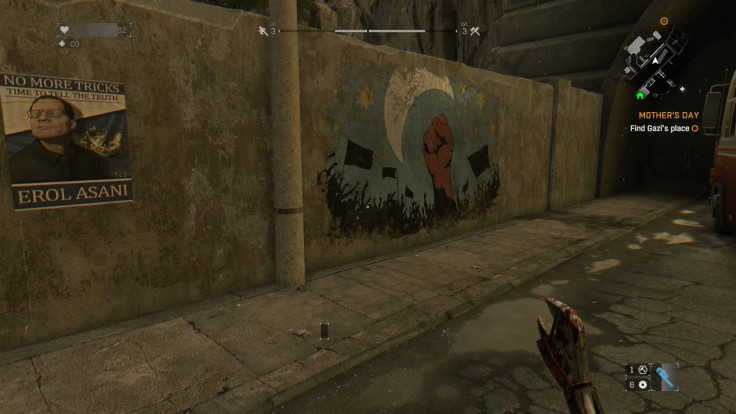
Similarly, while the moment-to-moment action in Dying Light is far more satisfying than I’d expected from the game, I can’t say the same about the bulk of the game’s narrative sequences. With a handful of exceptions, Dying Light’s campaign fails in just about every way that you’d hope not to see; from its flat characters and non-branching story to players’ complete inability to create recognizable change in the city collapsing around them.
Even seemingly marquee moments, like detonating a building that your allies blame for an increase in Volatile zombie attacks, don’t actually seem to have any real impact on the city of Harran.
That might be acceptable when playing massively-multiplayer projects, where the cost of producing a steady stream of phased content is simply too much for some studios. But there’s really no excuse for Techland not to have given players the feeling that their individual actions matter in the Dying Light campaign.
There are a handful of quest chains that deliver the sorts of progression I'm looking for. One in particular, involving a former gunsmith who's seemingly lost his taste for the craft, is actually a bit heart-breaking by the time players reach the end of the path. Parts of Harran have also been used masterfully in the name of the storytelling, despite how regularly Techland fails to tell a compelling one with its dialogue. One roof that I just so happened to stumble upon, with an updated count of the survivors who were taking refuge inside, will always stick out to me when I think back on my time Dying Light.

At times, Dying Light looks like the first real Game of the Year contender of 2015 but the amount of time it takes to see each ultimately begins to make the rest of the Dying Light campaign feel like the video game equivalent of being forced to eat your vegetables.
I was also disappointed to discover humans are more-or-less off-limits in Dying Light, making the game's campaign the sort of cut-and-dry experience that few will likely see a reason to revisit. There are no branching storylines that change based on your decision to kill/spare specific characters, leaving you unable to respond to some pretty monstrous behavior on more than one occasion.
Sure, you might throw a Molotov too close to a hostage or fail to stop one of the handful a Goon or Demolisher before it lays waste to the runners/raiders trying to take it down. But the various NPCs encountered on your journey can't be touched; a fact that, in many cases, forces players to adopt the role of a largely emotionless agency pawn. Which doesn't exactly jive with the many, many occasions in which Crane tries to take the moral high-ground.
On the flip side, given the obvious dangers of living in a city that's overflowing with zombies, it's kind of refreshing not to be forced to babysit every single living human you encounter in Dying Light. The game does include a handful of escort quests but many will be pleased to hear that your NPC companions are fairly capable combatants in Techland's latest zombie-survival game. And, if things go south, you'll get another chance to help them again in a few hours.
In some respects, Dying Light's lack of depth is appropriate for the subject material contained therein. The world's most-respected creator of zombie films may have used the medium to opine on the effects of greed but some of us just play zombie games because the idea of slaughtering the undead is generally more-palatable than other video game violence. So, kudos to Techland for not getting preachy in a game that really didn't need to be.
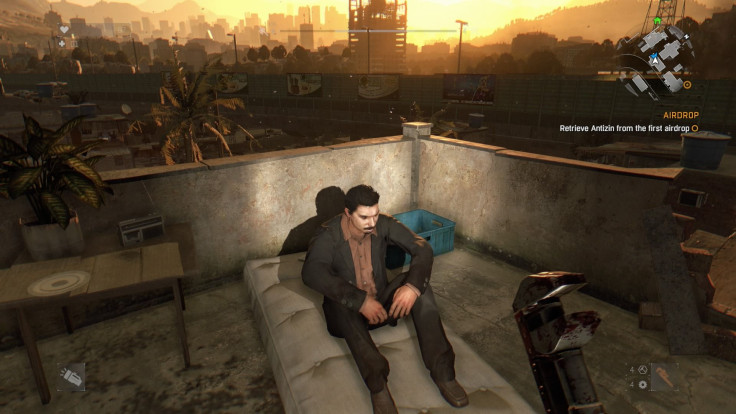
My only other complaints have to do with the lack of respect that Dying Light seems to have for players' time. While Harran may not be a sprawling land mass, on-par with Los Santos or Kyrat, the fictitious city that plays host to Dying Light is just large enough to make me wish the game offered fast travel. Free-running is certainly entertaining but getting two-thirds of the way to my destination, only to get blown up by a special zombie waiting just around the corner.
I also think we're long past the point of games not giving players the option of saving their progress at a moment's notice. Not when I've reached a specific point in a mission, earned enough experience for my next agility/power/survival level or unlocked one of the many safe houses scattered throughout Harran.
Is it possible that someone would abuse that power to avoid losing survival points on death?
Absolutely.
And I'm of the opinion it's their right to play this (or any) single-player game however the hell they want.
Fans of Dying Light have theoretically already paid for the game and, if we're being honest, it's not like PC gamers won't have the function (via modding) at some point after launch anyway. So can we just make it easier on everyone from the get-go, rather than waiting until fans are sufficiently pissed, and not leave two-thirds of the Dying Light community out in the proverbial cold?

I probably shouldn't write this many words about Dying Light without committing at least a few of them to the various multiplayer modes included in the game.
Those who would rather complete Dying Light with a friend will be happy to know that you can do so. Once you've unlocked a few safe houses you can access co-op and having a buddy around will absolutely make some missions easier to complete. There are also challenges that spring up, like timed zombie-killing sprees, that add a light competitive aspect to the cooperative mode.
There's also Be The Zombie mode, a competitive multiplayer experience that drops one player into the body of a super-powered night zombie and tasks them with taking down a team of survivors. The zombies have their own variation of the grappling hook, which make it easy for you to move around the map as needed, and can pounce on players for quick executions.
Kills earn experience, which feeds into a unique skill tree for the creature and the goal is to drain the survivors' respawn tickets before dying five times.
Competitive multiplayer doesn't do much for me these days, but it's not hard to see how someone looking for something a little different than Call of Duty, Destiny, or whatever else the kids are playing these days, could find enjoyment in Dying Light's only competitive mode.
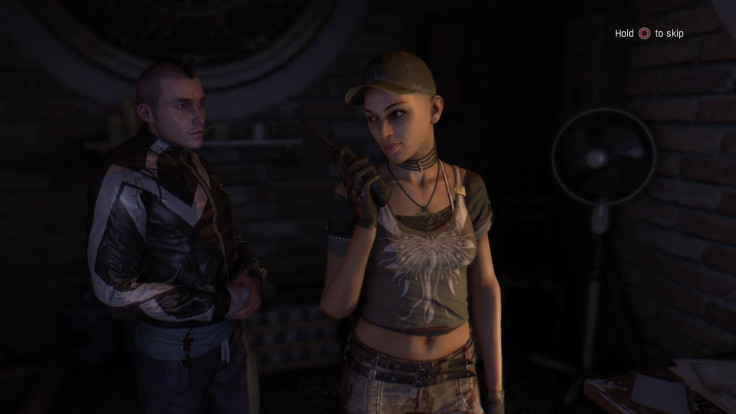
Dying Light Review - Final Verdict
Dying Light exceeded my expectations in many ways. It's free-running is even more enjoyable than it was during my hands-on time at E3 2014 and the combat is compelling enough not to completely drag down the rest of the experience. I just wish Dying Light felt like the first top-tier release of 2015, instead of something to hold us over until bigger games head to market.
Rather than inventing something new, Dying Light combines a number of stereotypical open-world missions/scenarios that gamers have shown affection for in recent years, with moment-to-moment action that feels as much like a successor to Mirror's Edge as a post-pandemic tale of survival. Action is fast-paced, but it feels like that's a result of the fact that taking too long to stop and smell the roses in Dying Light makes it pretty easy to sniff out the game's many weak points.
The game's multiplayer offerings are similarly light. Players can jump into a cooperative game from any safe house, allowing you to help and/or get help from friends who also own the game; however, the only real difference is that Dying Light will occasionally offer up small challenges while playing together.
For a certain crowd, Dying Light will undoubtedly be the first great game of 2015 and it's not even really that hard to envision a scenario where an avid zombie-survival fan sees the game as a 2015 Game of the Year contender. There's plenty to love in Dying Light, even if much of it is regurgitated from a variety of Ubisoft games, both open-world and otherwise.
Dying Light probably won't appeal to anyone who wasn't a fan of Dead Island and those who've grown accustomed to hyper-detailed and/or sandbox-influenced PC games -- like 7 Days To Die, DayZ and/or Project Zomboid -- might not be content with Dying Light, either. It's an interesting game, and one of the handful of current-gen projects that truly feel like they wouldn't have been possible on older consoles, but Dying Light ultimately falls short of being anything other than a decent time killer.
Score- 3/5
Full Disclosure: The copy of Dying Light used for this review was provided to us, free of charge, by a representative of Techland; however, neither the PR company nor the studio had any say in the contents of this review.
What did you think of Dying Light? Can't believe that we didn't give the game a higher (or lower) score than we did? Want to share your own thoughts on the Dying Light gameplay experience?
Let us know in the comments section!


